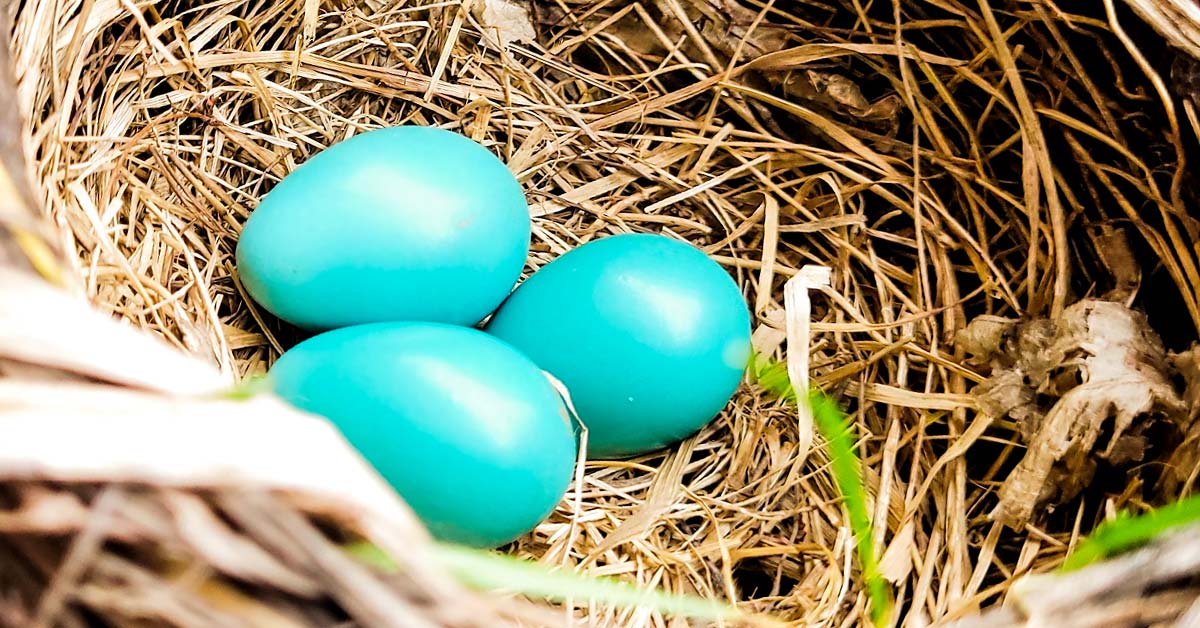Did you come across a blue egg and now you’re wondering what kind of bird could have laid it?
There are actually over 20 birds in the world that lay blue eggs.
Cool, huh? But today, I’m going to cover the 8 most likely birds.
8 Birds that Lay Blue Eggs
Here are 8 common birds that lay blue eggs…
1. Blue jays (Cyanocitta)
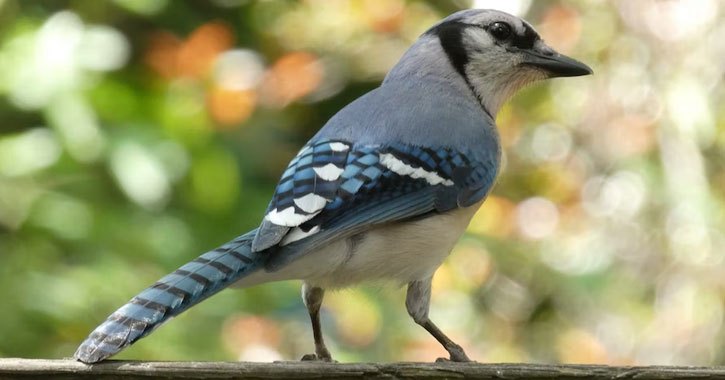
Blue jays reside in urban and suburban areas, but love the woodlands the most.
Their eggs aren’t exclusively blue – they come in a wide range of colors too, such as white, green or blue-green.
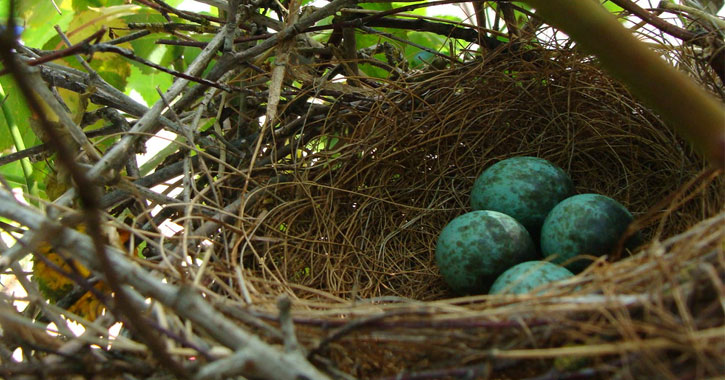
Male and female blue jays build their nests together, usually in coniferous trees, pines and other spots 10 to 25 feet above the earth.
The eggs of blue jays are light blue with brown speckles.
- Clutch size: 2 to 7 eggs
- Egg size: 0.7 to 0.9-inch wide, 1 to 1.3-inch long
2. Bluebirds (Sialia)
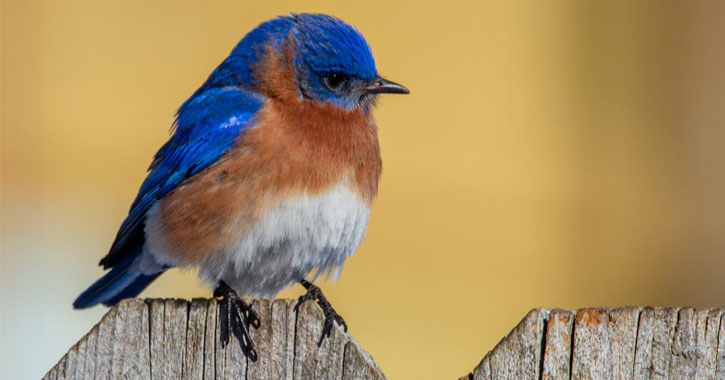
Bluebirds are royal-blue birds with white bellies and hints of brown and orangey specks, contrasting black beaks and beady black eyes.
Pictured here is a gorgeous blue Eastern bluebird (Sialia sialis), but other birds from the bluebird family (like the Mountain bluebird and Western bluebird) also lay blue eggs.
Bluebirds reside on the outskirts of forests near urban and suburban areas.
They often pick old woodpecker holes in dead oak or pine trees as nest placement.
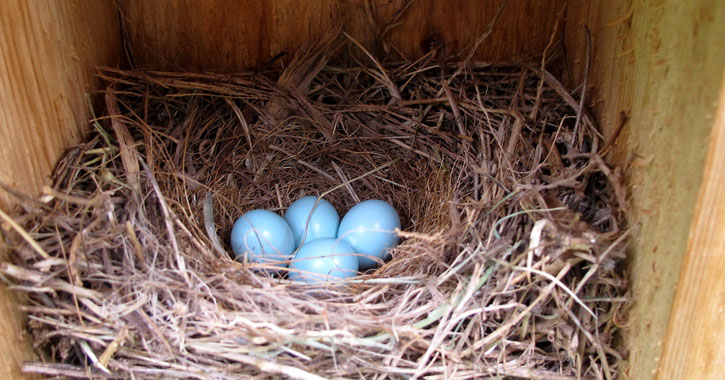
Female bluebirds are responsible for most of the nest-building, while the male gather materials and flap his wings around the would-be nest.
- Clutch size: 2 to 7 eggs
- Egg size: 0.6 to 0.9-inch wide, 1 to 2.4-inch long
3. American Robins (Turdus migratorius)
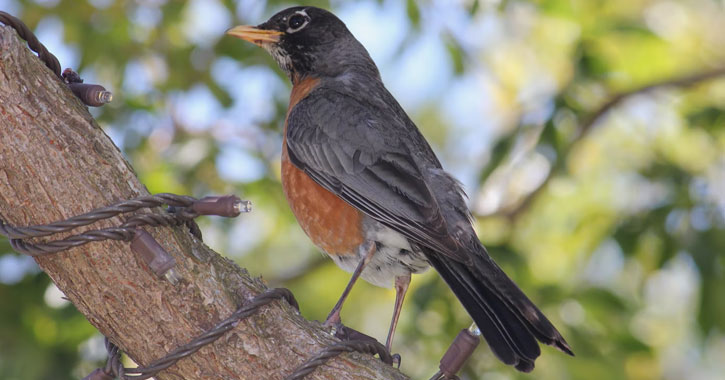
American Robins are migratory thrush species.
They are common birds all throughout the US.
Many robins choose to fly south in the winter, but some withstand the cold and just stick around their nests.
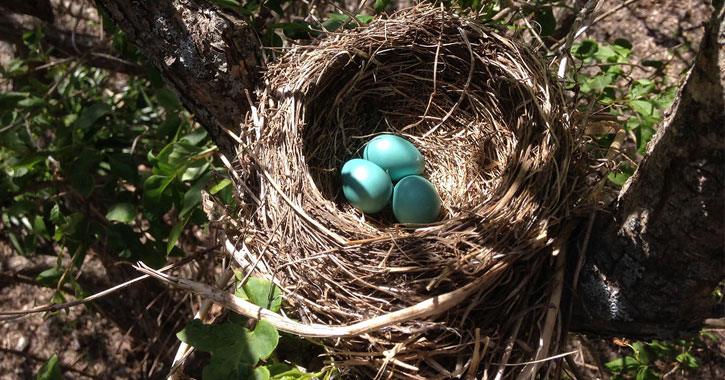
Female robins sleep in their nests during summer, while males join the roost.
Robin eggs are pale blue in color.
It is known that when the eggs have a brighter shade of blue, male robins are more dedicated to caring for their offspring.
- Clutch size: 3 to 5 eggs
- Egg size: 0.8-inch wide, 1 to 1.2-inch long
4. Dunnock Birds (Prunella Modularis)
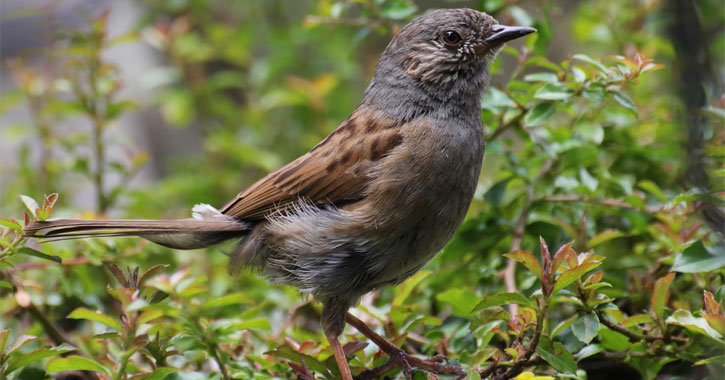
Dunnock birds are common in the UK and other European countries, but they can also be found in the US.
Also known as edge sparrow (even if they’re not technically a sparrow), Dunnocks are part of the accentor bird family.

Dunnock birds nest in hedges, shrubs, and other simiilar areas within dense regions.
This is because these small birds are very shy and stay away from crowds. Some of Dunnocks nest in trees, as long as they feel protected.
Dunnocks can be monogamous or polyandrous. Here’s an interesting fact: because females mate with multiple males, males never know if they are actually the father.
As a result, all males that mated with the female ends up helping her in building the nest and providing her food.
Female Dunnock birds lay their bright-blue eggs from April to July.
- Clutch size: 4 to 5 eggs
- Egg size: 0.7-inch wide, 0.6-inch long
5. Red-Winged Blackbirds (Agelaius phoeniceus)

Red-winged blackbirds are found in southern Alaska, Washington and the Pacific coast of California.
Red-winged blackbirds roost and breed in various habitats, but they love fresh water, saltwater marshes and other wetlands.
Those who choose to nest in dry land often stay in wooded forests and areas near vegetation.
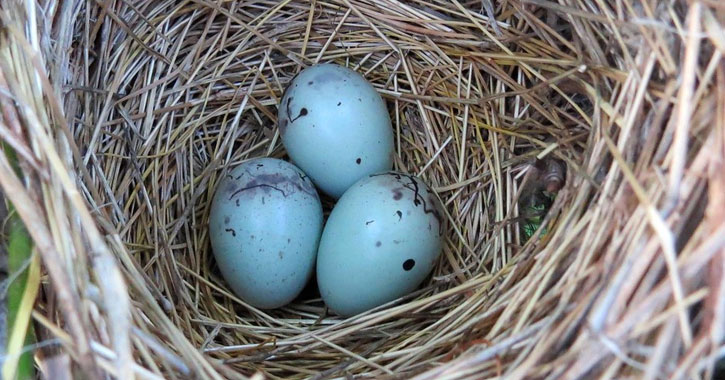
Red-winged blackbirds are highly polygamous (one male can have up to 15 different females), but males are fiercely territorial during breeding season.
Female red-winged blackbirds usually lay 3 to 4 pale blue or greenish blue eggs with brown, black, or purple streaks and splotches marks.
The laid blue eggs take 10-12 days in hatching.
- Clutch size: 3 to 4 eggs
- Egg size: 0.6 to 0.8-inch wide, 0.9 to 1.1-inch long
6. Finches that Lay Blue Eggs

I’ll focus on house finch for this section (pictured above), but this bird isn’t the only finch in this family that lay blue eggs.
Finches are spread across 200 species, many of which have blue eggs.
Examples include the Eurasian bullfinch, Lawrence’s goldfinch, Lesser goldfinch, American goldfinch, and Cassin’s finch.

House finch, Haemorhous Mexicanus, is endemic to the western parts of North America.
They sometimes use nestboxes to lay their eggs and are one of the most common backyard nests that people find.
House finches lay pale bluish green eggs that are speckled with spots of black, reddish-brown or light lavender.
- Clutch size: 2 to 6 eggs
- Egg size: 0.5 to 0.6-inch wide, 0.6 to 0.8-inch long
7. Thrushes (Catharus guttatus)
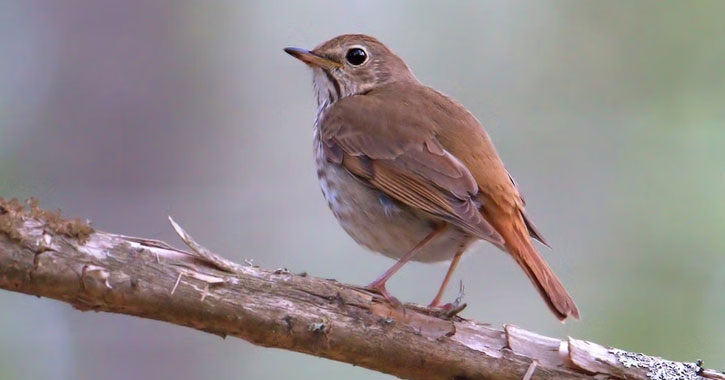
Like the finches, thrushes are a huge bird family (about 174 species) of medium-sized passerine birds.
Pictured above is a Hermit Thrush, but the Dusky thrush, Clay-colored Thrush, Wood Thrush, Aztec Thrush, White-throated Thrush, Aztec Thrush, and other thrushes lay blue eggs.
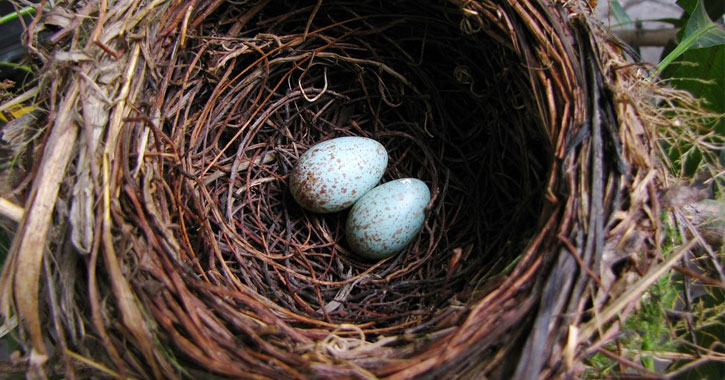
The size and coloration of eggs between the thrushes vary slightly.
Female Hermit thrushes lay 3 to 6 eggs, which they incubate for about 11 to 13 days.
After the eggs hatch, males bring food to the nests and females feed their chicks for up to 2 weeks.
Hermit thrush eggs are light blue in color with distinct brown spots.
- Clutch size: 3 to 6 eggs
- Egg size: 0.6 to 0.7-inch wide, 0.8 to 1-inch long
8. Red-winged Starling (Onychognathus morio)

Red-winged starlings are striking black birds with orange to red contrasting wings.
They are one of the most abundant birds in the US, often seen hanging out on telephone wires, on the roadside, and in both urban and suburban areas.
Red-winged starlings nest in bushes, dense grass, marshes, and other areas with vegetation.
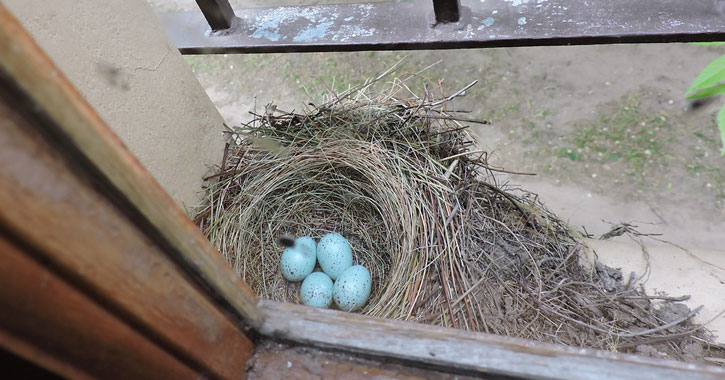
Male red-winged starlings breed with multiple females (somewhere between 5 and 15 females). While only females incubate their eggs, males are territorial and are found near the nest and are ready to fight predators.
About 2 to 4 pale bluish green eggs are laid by female red-winged blackbirds. The eggs, which oval in shape with brown or black markings, are incubated for 11 to 13 days.
- Clutch size: 2 to 4 eggs
- Egg size: 0.6 to 0.8-inch wide, 0.9 to 1.1-inch long
Facts about Birds that Lay Blue Eggs
I’m sure you’re curious how the birds above lay blue eggs, and why others don’t.
Eggshells of birds can be in different colors from the more common white, cream and tan, to brighter-tinged ones like red, pink, green, purple, blue, and everything in between.
What’s responsible for the blue tones is the bile pigment called biliverdin, which are deposited as the shell is formed in the bird’s shell gland (the bird’s version of a uterus), just before the eggs are laid.
Shells receive different concentrations of biliverdin, which is why we see light blue tinged eggs, blue-greens, ice blue, or royal blue colored.
If you’re interested in reading up more about these pigments, the American Poultry Association gets deeper into the history and study of blue eggs.
Those who want to learn about other birds with interesting characteristics, check out this list of pretty purple birds, birds with long beaks, and songbirds of Pennsylvania.
